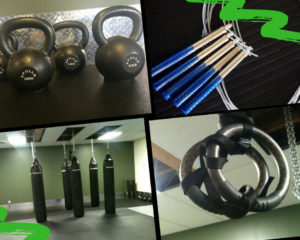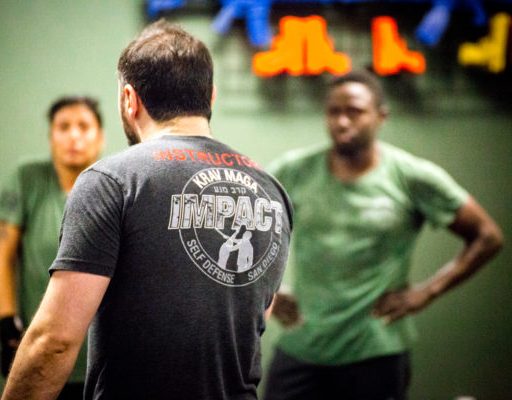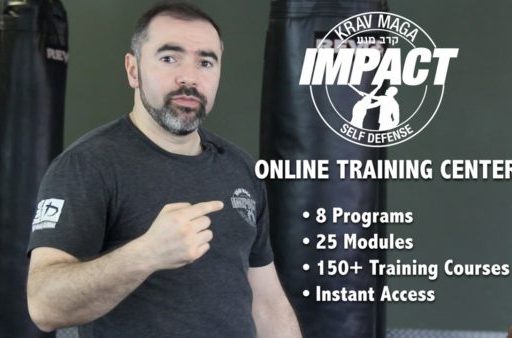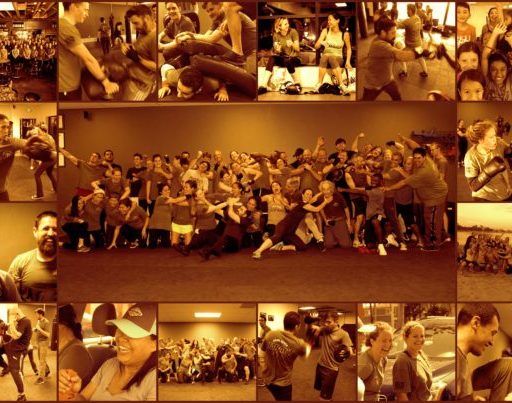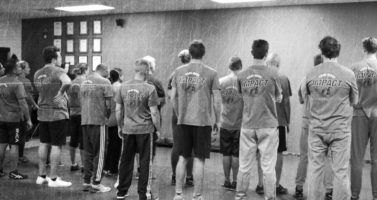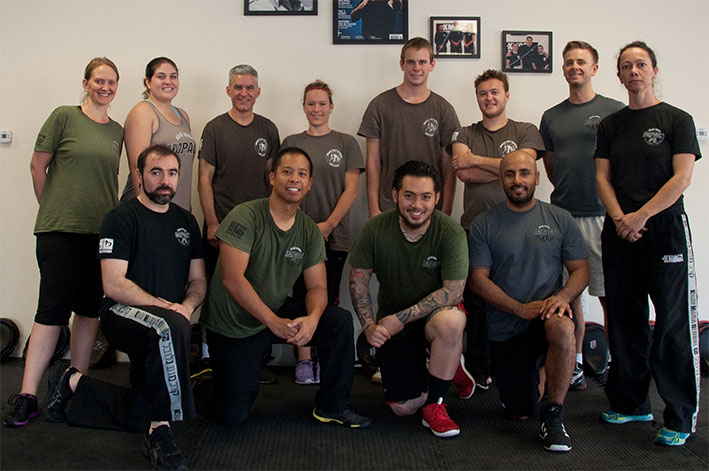

Testing guidelines at Impact Krav Maga
Krav Maga is not a traditional martial art that focuses on form, elegance and elaborate movement. Nor is it like boxing, Muay Thai or MMA that teaches people to fight in a competitive setting on equal terms with set rules and regulations. It is a form of combat and self-defense that deals with surprise attacks, weapons, multiple attackers, and more. Success is achieved by any means necessary most of which are disallowed in regular sports fighting systems. So given the nature of this system, how do people measure proficiency of Krav Maga practitioners?
Given that we cannot have students stab each other with real knives and attack each other with baseball bats or choke each other randomly in dark alleys, we have to find a different way to assess achievement. This is where rank testing comes in. Obviously nothing can exactly replicate the intensity of a real life-threatening altercation, but Krav Maga testing comes close and is meant to push students’ technical, physical and mental abilities to the limit.
Tests are designed to be challenging and to test students’ abilities under stressful conditions. Student tests are by invitation only and are usually conducted in house and occasionally during National Krav Maga Global testing camps. To understand the Krav Maga ranking structure please see the following article (Krav Maga Ranking Structure).
At Impact we adhere to the Krav Maga Global ranking structure. However we put very little (if any) emphasis on students’ ranks. Instead we strive to create an “open training environment”, where ranking is irrelevant, and most students train alongside each other regardless of rank. Additionally all students are taught a wide variety of Krav Maga techniques regardless of experience. In fact, our Core and AM Krav Maga syllabus covers all techniques and tactics from Practitioner levels 1,2 and 3, select Practitioner 4 and 5 techniques and even some Graduate level techniques, as well as advanced stand up and ground fighting drills. This means that in the first 3 months of training you will see material that a student in a more traditional Krav Maga school may not see for years, since it is outside of his immediate rank. Of course practicing a technique once does not guarantee proficiency, hence regular training is the key to ensuring good progress.
“Chasing rank” (the act of training simply to achieve a rank) should not be the goal of any student. Your rank will not be the one fighting for you when faced with a life or death struggle on the street and therefore should not be your motivation. Nevertheless, we understand that students committed to training and growing within the system have checkmarks and goals that they want to reach, and earning the next rank is a good gauge of your development in Krav Maga. Therefore we wanted to review the guidelines and our expectations for students ranking and testing at Impact.
Practitioner 1 testing: To successfully pass the P1 test, students must exhibit good grasp of all P1 material. They must develop and demonstrate proficiency with basic striking, stances, movement and basic defenses against most kicks and punches, select chokes, and select ground fighting scenarios. Students will also be tested on their ability to deal with knife attacks and returning attacker scenarios. Upon passing the test, students will be to further refine and develop their fighting techniques through Impact’s unique Full Contact Class Curriculum.
Students are considered for testing generally after completing 45 hours of Core Krav Maga training, as well as significant amount of Strike Lab classes. Additional attendance to Basics classes is a plus and usually accelerates the student’s progress.
Practitioner 2 testing: In short, students testing for Practitioner 2 level are expected to show improvements in all P1 techniques and show proficiency with all P2 curricula, as well as demonstrate significant improvements in striking mechanics and fighting tactics. Practitioner 2 curriculum encompasses more defenses against straight punches and kicks, hooks and roundhouse kick defenses, all choke defense, more ground fighting scenarios and tactics and some knife threat defenses.
Students are considered for testing generally after completing a total of ~100 hours of Core Krav Maga training, as well as exhibiting regular attendance to Strike Lab classes.
Practitioner 3 testing: Upon successful completion of this test, students will gain access to our Advanced Krav Maga Classes, where they will be required to perform at a higher level. To successfully pass this test students will have to show marked improvements in understanding and execution of all P1 and P2 techniques as well as show proficiency of all P3 techniques. Students will also be tested on their full contact fighting abilities with protective equipment. In general, students that have reached the rank of P3 or higher will have demonstrated fighter’s characteristics: (Ability to overcome failure and unexpected outcomes, deal with unpredictable situations with minimal hesitation, etc.) Some additional techniques that P3 material will test are defenses against headlocks (both standing and on the ground), grabs and tackle attempts, defenses against strikes from all angles, use of common objects for self-defense and free ground fighting exercises.
Students are considered for testing generally after completing a total of ~150 hours of Core Krav Maga training, as well as exhibiting regular attendance to Strike Lab classes. Students must also have completed at least 10 hours of Full Contact training.
Practitioner 4 and 5 testing is determined by students’ progress and performance in the Advanced Krav Maga Classes, Full Contact Classes and all other attended classes.
Graduate level testing is determined by students’ progress and performance in the Advanced Krav Maga Classes, Full Contact Classes and all other attended classes. Most Graduate level testing will be conducted at National Annual KMG Training events or in house with direct consent from Eyal Yanilov.
The list above is a quick summary of criteria for each rank. For a detailed list of techniques examined at each stage, please feel free to talk to one of us (Yury and Veronica) at the school. The suggested hours of practice are also a generalization and depend on your natural abilities and training habits. Also remember, just seeing the technique and practicing it once or twice is not sufficient, rather the ability to execute this technique, the relevant combatives and finishing modes under stress, when surprised, or when tired is what really defines your proficiency as Krav Maga practitioner and will count the most if you have to use it in the real world.
Train hard. Stay safe.

